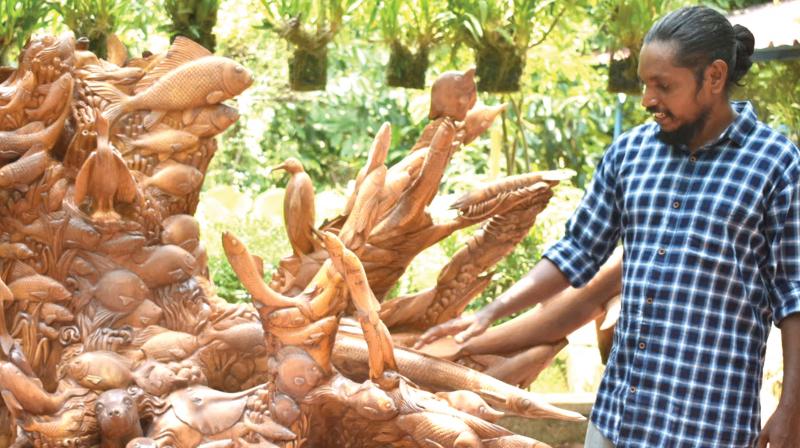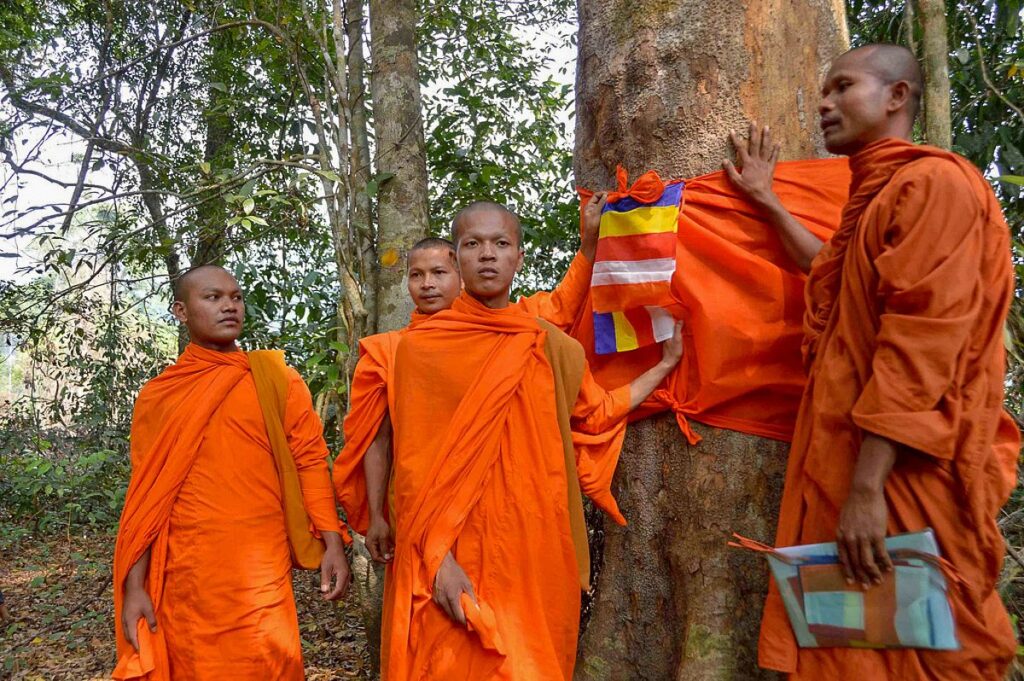Bhungloti is a creeper (a plant that grows close to the ground and has horizontal growth) that in combination with the pith of the roots of a jackfruit tree yields a saffron dye. It is traditionally used in giving colour to the robes of Buddhist monks. The people of villages in the vicinity converged to form Chala Village Sanctuary Conservation Society which is a 173-hectare reserve forest under the Sivasagar Forest Division, Assam. The Buddhists in the area have raised concerns regarding the near-extinction of bhungloti and called for a movement for conserving the adjoining Chala Reserve Forest to preserve the bhungloti. The Chala Reserve Forest is about 100 meters above sea level and it houses a few orchids that are usually found in higher altitudes.
The women of the village too lamented how getting vital ingredients from four indigenous plants for dyeing their mekhela, a traditional garment, indigo blue was getting increasingly difficult.

Bhungloti-How does Chala Village society work?
The 683.173-hectare reserve forest under the Sivasagar Forest Division was designated as the Chala Village Sanctuary at that conference, and the organisation was established one month later. To aid the understaffed Forest Department in keeping loggers and poachers at bay, a forest security group made up of 22 villagers was also formed.
“We have only three staff to manage Chala and only one of them is permanent. The village sanctuary initiative, albeit non-notified, has yielded some green soldiers who are helping us check tree felling,” Dhimangshu Saikia, the Forest Division’s Ranger said.
Each member of the forest protection party has been given an identity card to guard the green space that houses at least 1,000 types of trees, medicinal plants, and 67 species of orchids — down from 130 less than a decade ago — besides leopard, black panther, hog deer, and a range of birds and butterflies.
In addition to providing security, the organisation has been regreening 30 hectares that had been cleared by wood thieves and a few oil rigs that the Oil and Natural Gas Corporation had planted decades earlier. “The Forest Department provided us more than 20,000 seedlings to plant, and we are caring for them. We have also established a 2.5-hectare biodiversity park in a part of the forest with an assortment of orchids and indigenous trees,” Prachurjya Shyam, the society’s executive member said.

It is all about the Orchid altitude mystery
The Chala Reserve Forest is about 100 metres above sea level. But it houses a few orchids that are usually found in higher altitudes.
“We are documenting the plants and herbs of our village sanctuary. They include the now rare Gnetum gnemon, a nutrient-rich plant locals have consumed for ages,” Mr Chowlu said.
But plant experts engaged by the society have found it intriguing that the sanctuary sustains the Tainia penangiana, an orchid found at altitudes beyond 500 metres.
The association has been running recurrent awareness efforts to emphasise the need of protecting these orchids and the plants that produced the colours used by the locals. Organizations like the World Wide Fund for Nature-India have agreed to fund their campaign.
(The Hindu)

